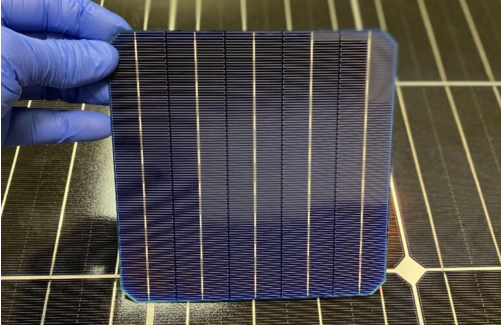The U.S. Patent and Trademark Office has awarded Solar Inventions a patent on its improved architecture for solar photovoltaic cells, the company announced today, opening the door to commercial acceptance and licensing by leading manufacturers.
The invention, called Configurable Current Cells, or C3, creates silver savings of up to 12% — equal to over $1 million in savings per gigawatt at current silver prices. C3 also improves cell, module and system performance. The improved cells and panels can be made on existing PV factory lines, without any new equipment or materials.
With U.S. Patent No. 11,145,774 in place, Solar Inventions will be finalizing pending C3 patents in China, Europe, and many more areas, which together would account for 90% of the worldwide solar market.
“Our global IP portfolio is coming together,” said Bill Nussey, CEO of Solar Inventions. “This patent opens the door for us to move forward on joint ventures with key partners in areas with large-scale cell and module manufacturers, such as India, China, Southeast Asia, the EU, and the U.S. We’ve begun discussions with potential partners in all of these regions.”
Solar Inventions CTO Dr. Ben Damiani recently presented two major papers on the technology to two international conferences (IEEE PVSC in the United States and EUPVSEC in Portugal). The first looks at boosting a solar module’s performance by using the C3 technology to increase the cell-to-module ratio. The other explains the science behind the silver savings.
“For example, a nine-busbar PERC solar cell would save approximately $1 million in silver per gigawatt of production, while improving performance by 2 to 3 watts per panel for an additional $1 to 2 million worth of power gains,” Damiani said. “With the industry shipping almost 200 GW of solar cells per year, C3 has the potential for $400 million to $600 million in annual industry-wide impact.”
The Solar Inventions patent stems from the work of Damiani, a veteran inventor in the solar and semiconductor sectors who previously worked at Suniva and Intel, and is now the company’s chief technical officer. Damiani discovered he could create multiple “lanes” or subcells on a single wafer by electrically dividing each cell during the metallization process. This technique effectively creates a new cell architecture, opening the door for multiple innovations beyond C3.
To commercialize his discovery, Damiani co-founded Solar Inventions with Nussey and Gregg Freishtat in January 2018. By early 2019 the new cell architecture was advancing in the U.S. Department of Energy’s first American-Made Solar Prize contest for innovative technologies. In September 2019, Solar Inventions won first place, pushing its total prizes to $800,000.
The company used the prize money to manufacture several iterations of pilot cells and modules, and obtain independent third-party confirmation testing from CFV, NREL, and Sandia National Laboratory. The C3 technology was tested and silver savings confirmed on monocrystalline PERC, HJT, n-type, half-cells, and bifacial cells.
Southeast U.S. solar installer Cherry Street Energy placed the first order for C3 cells for an installation on the roof of Creature Comforts Brewery in Athens, Georgia. Meanwhile, during the early months of the pandemic, silver spiked over $24 an ounce for the first time since 2013 and has continued to trade in that range, making the C3 technology all the more appealing.
“The benefits are similar to half-cells, also a major solar industry trend, but without requiring cells to be physically broken and rewired,” said Damiani. “As the industry continues to trend toward large wafer sizes, our C3 technology actually has an even bigger impact. The added flexibility of the subcell architecture allows for new ways to limit the negative impact of power loss due to higher electrical current, which is directly related to the size of the wafer inside a solar module.”
Solar Inventions receives patent for solar cell manufacturing process that can save millions in silver costs
Source:solar power world






